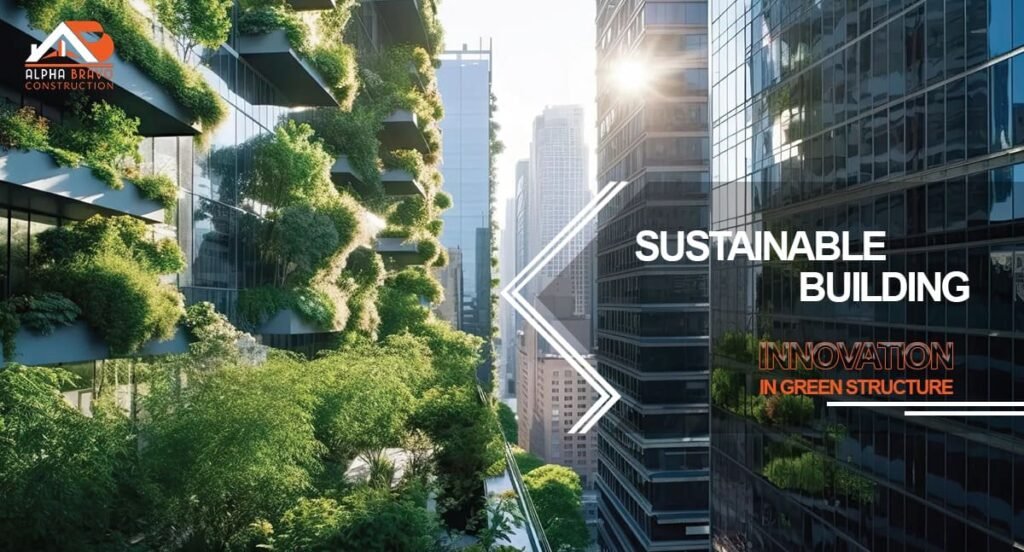Sustainable Building: Innovations in Green Construction

As the world grapples with the urgent need to combat climate change, sustainable building practices have emerged as a crucial solution. The construction industry, responsible for a significant portion of carbon emissions and resource consumption, is now embracing innovative approaches to create a more environmentally conscious future. In this blog, we’ll explore some of the key innovations driving green construction.
1. Innovative Design Approaches
At the heart of green building practices lies innovative design. Architects and designers are integrating sustainable principles into their work, such as:
- Passive Solar Design: Leveraging the sun’s energy for heating and cooling by optimizing building orientation and window placement.
- Natural Ventilation: Designing spaces to allow for natural airflow, reducing the need for energy-intensive mechanical ventilation.
- Biomimicry: Drawing inspiration from nature to create structures that harmonize with their surroundings and maximize energy efficiency.
2. Energy Efficiency Strategies
Energy consumption in buildings contributes significantly to greenhouse gas emissions. Green buildings incorporate advanced technologies to enhance energy efficiency, including:
- High-Performance Insulation: Using materials that minimize heat transfer, reducing the need for heating and cooling.
- Energy-Efficient Windows: Optimal glazing to balance natural light and insulation.
- Smart HVAC Systems: Adaptive systems that adjust energy usage based on occupancy and external conditions.
- On-Site Renewable Energy: Integration of solar panels and wind turbines to reduce reliance on fossil fuels.
3. Eco-Friendly Materials
Traditional construction materials often carry a heavy carbon footprint due to resource extraction and production processes. Green building innovations emphasize the use of eco-friendly materials, such
- Recycled Steel: Utilizing steel from recycled sources.
- Reclaimed Wood: Salvaging wood from old structures for new construction.
- Low-Impact Concrete Alternatives: Reducing the environmental impact of concrete production.
- Non-Toxic Finishes and Paints: Ensuring indoor air quality and occupant health.
4. Water Management and Conservation
Efficient water management is critical for green buildings. Innovations include:
- Rainwater Harvesting: Collecting rainwater for non-potable uses.
- Greywater Recycling: Treating and reusing wastewater from sinks and showers.
- Low-Flow Fixtures: Minimizing water consumption.
- Green Roofs and Permeable Pavements: Managing stormwater runoff and reducing strain on urban infrastructure and natural water systems.
5. Smart Building Technologies
The rise of the Internet of Things (IoT) has paved the way for smart building technologies that enhance both comfort and sustainability. Examples include:
- Automated Lighting: Lights that turn on/off based on occupancy.
- Occupancy Sensors: Adjusting energy usage in unoccupied spaces.
- Smart Thermostats: Optimizing heating and cooling based on real-time conditions.
- Building Management Systems: Monitoring energy consumption and providing
insights for waste reduction.
In conclusion, sustainable building innovations play a pivotal role in constructing a greener, more resilient future. By adopting these practices, we can mitigate the impacts of climate change while creating healthier, more efficient spaces for generations to come.

